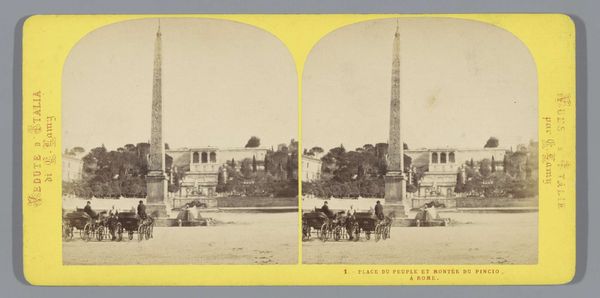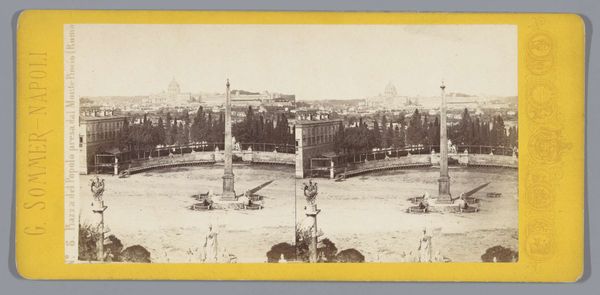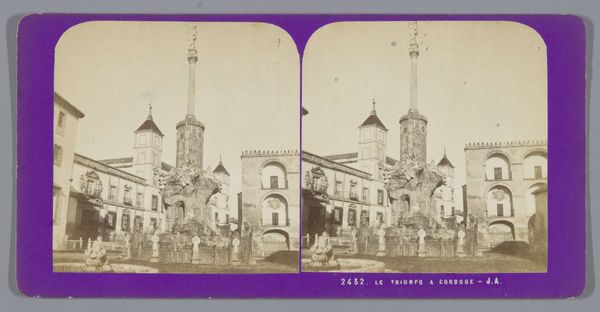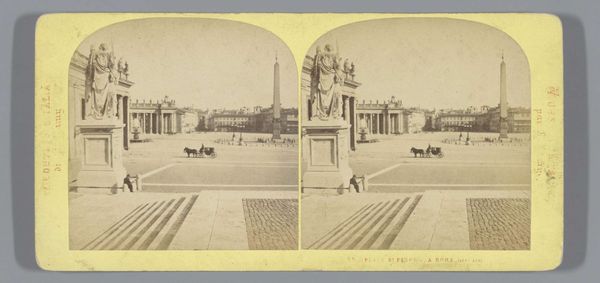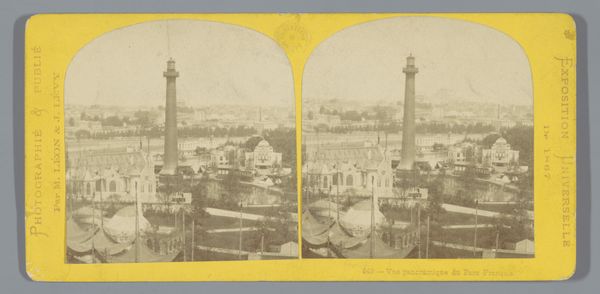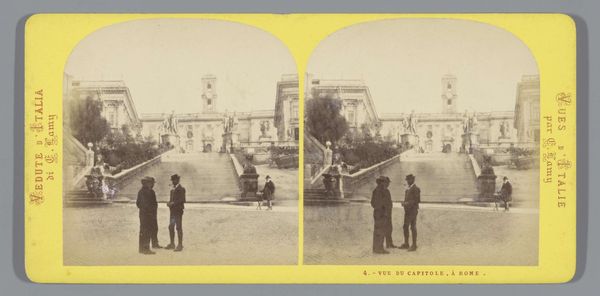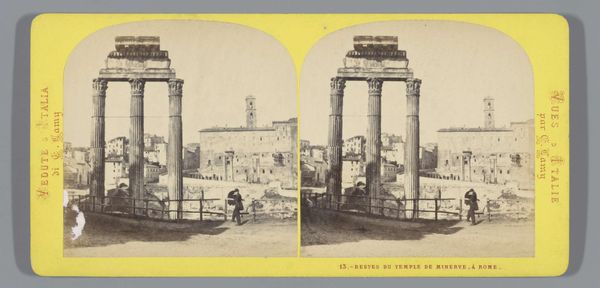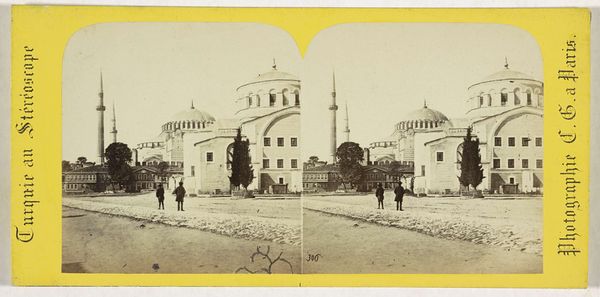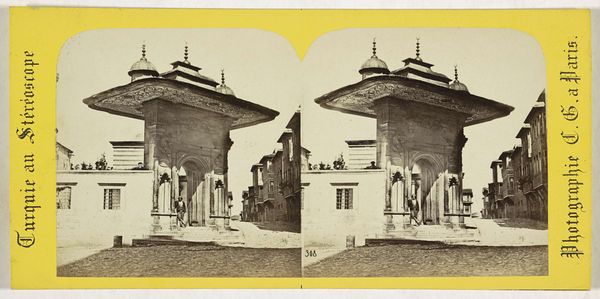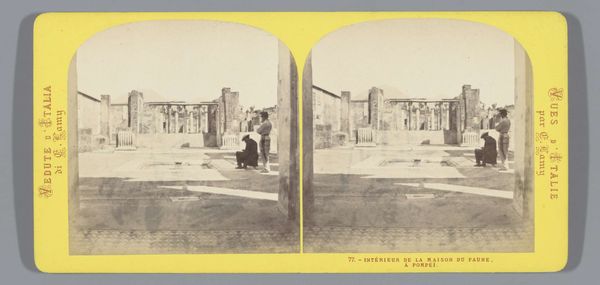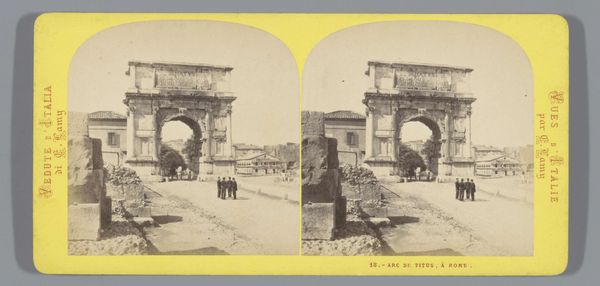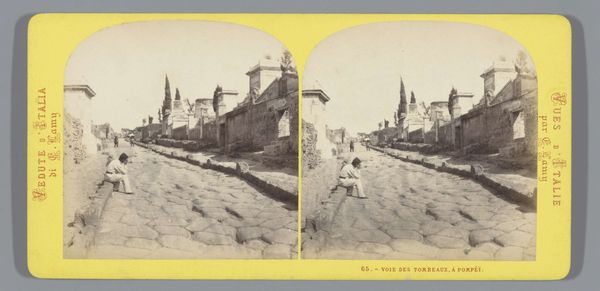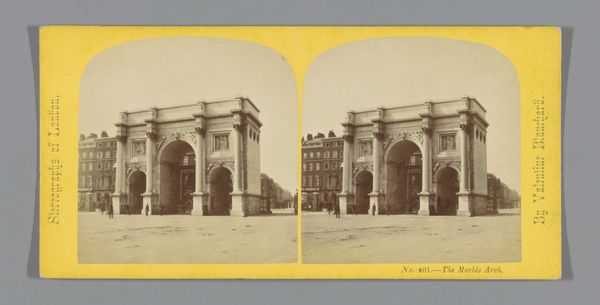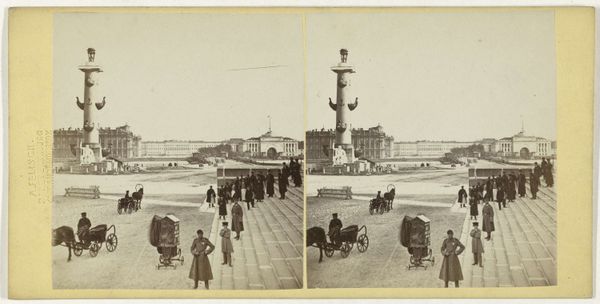
photography
#
landscape
#
photography
#
cityscape
#
italian-renaissance
Dimensions: height 88 mm, width 178 mm
Copyright: Rijks Museum: Open Domain
Editor: This is "Piazza del Popolo, met obelisk en de Porta del Popolo" by Ernest Eléonor Pierre Lamy, created between 1861 and 1878. It's a photograph, capturing a cityscape in Rome. The obelisk immediately grabs your attention. How would you approach analyzing this photograph from an art historical perspective? Curator: Let's begin by considering the composition itself. Note how Lamy frames the Piazza del Popolo. The verticality of the obelisk is echoed by the Porta del Popolo and juxtaposed against the horizontality of the buildings. What effect does this structure create for you, and how does the interplay of light and shadow influence your reading? Editor: The light makes it feel very flat and documentary, though the dark doorway adds some depth. But the way the obelisk dominates feels deliberate. Curator: Precisely. Now consider the tonal range, or lack thereof, as you observed, and the overall clarity, the formal qualities, they evoke a sense of objective recording. Lamy appears concerned with capturing the architecture with minimal intervention. This relates directly to its function, and photography's function generally. Can you expand on that? Editor: Are you suggesting the choice of photography emphasizes its goal to mirror truth and objectivity? While painting is interpreted, photography’s effect stems from its seemingly scientific registration? Curator: Precisely. One must appreciate the nuances of this photograph not only as documentation, but for the careful staging of reality—the angle, the framing, the balance between shadow and light. It's not a purely objective record but a constructed visual statement that relies heavily on formal elements to generate meaning. Editor: I now see it as less of a plain documentary image and more of a calculated commentary through careful design and technique. I appreciate the explanation, focusing our view on how to decipher meaning and appreciate nuances of formal aspects to better grasp and discuss its intention.
Comments
No comments
Be the first to comment and join the conversation on the ultimate creative platform.
